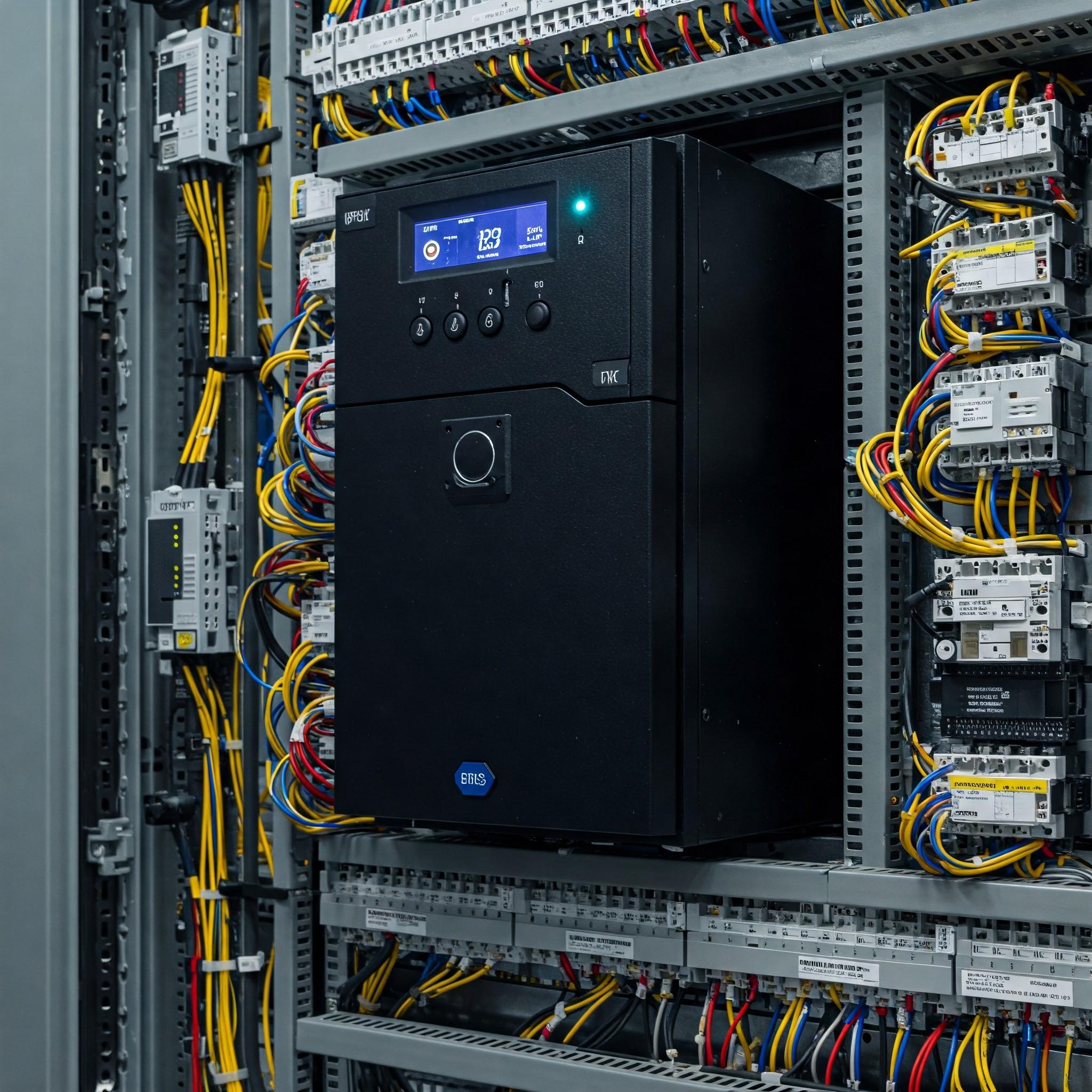What is UPS Power & How to manage UPS Power in different types of fit-out projects.

Uninterruptible Power Supply (UPS) systems are critical components in electrical installations, providing backup power in the event of a mains power failure. They are commonly used in various applications, including data centers, hospitals, and commercial buildings, to ensure continuous operation of critical equipment and systems. UPS Power Management in Fit-Out Projects is essential to ensure reliable and uninterrupted power supply across different project types. This essay will provide an overview of UPS systems and discuss how to manage UPS power in different types of fit-out projects.
Overview of UPS Systems
UPS systems are designed to provide backup power to critical equipment and systems in the event of a mains power failure. They typically consist of the following components:
1. Rectifier
The rectifier converts AC power from the mains into DC power, which is used to charge the batteries and power the inverter.
2. Battery
The battery stores the DC power generated by the rectifier and provides backup power to the inverter in the event of a mains power failure.
3. Inverter
The inverter converts DC power from the battery into AC power, which is used to power the critical equipment and systems.
4. Static Bypass
The static bypass provides a bypass path for the AC power from the mains to the critical equipment and systems when the UPS is in bypass mode.
5. Control and Monitoring System
The control and monitoring system monitors the status of the UPS and its components, controls the operation of the UPS, and provides alerts and notifications in case of faults or failures.
6. Output Distribution
The output distribution distributes the AC power from the inverter to the critical equipment and systems.
Types of UPS Systems
There are several types of UPS systems, each with its own advantages and suitability for different applications. The following are the most common types of UPS systems:
1. Standby UPS
Standby UPS systems are designed to provide backup power to critical equipment and systems in the event of a mains power failure. They typically have a rectifier, battery, and inverter, and are suitable for applications where the load is not continuous and the downtime is acceptable.
2. Line-Interactive UPS
Line-interactive UPS systems are designed to provide backup power to critical equipment and systems in the event of a mains power failure. They typically have a rectifier, battery, inverter, and static bypass, and are suitable for applications where the load is continuous and the downtime is not acceptable.
3. Double-Conversion UPS
Double-conversion UPS systems are designed to provide backup power to critical equipment and systems in the event of a mains power failure. They typically have a rectifier, battery, inverter, static bypass, and control and monitoring system, and are suitable for applications where the load is continuous and the downtime is not acceptable.
4. Modular UPS
Modular UPS systems are designed to provide backup power to critical equipment and systems in the event of a mains power failure. They typically have multiple rectifiers, batteries, inverters, static bypasses, and control and monitoring systems, and are suitable for applications where the load is continuous and the downtime is not acceptable.
Managing UPS Power in Different Types of Fit-Out Projects
Managing UPS power in different types of fit-out projects is essential to ensure reliable and uninterrupted power supply. The following are some considerations for managing UPS power in different types of fit-out projects:
1. UPS Power in Data Centers
Data centers require a reliable and uninterrupted power supply to ensure continuous operation of servers, networking equipment, and other critical infrastructure. Managing UPS power effectively in data centers includes:
Choosing the right UPS system based on load criticality and redundancy needs.
Ensuring proper sizing so backup power meets system requirements.
Installing in a dedicated space with ventilation, cooling, and easy maintenance access.
Implementing a monitoring system to track UPS status, control operations, and send alerts during faults or failures.
2. UPS Power in Hospitals & Healthcare Facilities
Hospitals and healthcare facilities rely on a consistent power supply to keep medical equipment, lighting, and critical systems running. Managing UPS power in these settings involves:
Selecting an appropriate UPS for essential medical devices.
Sizing the system correctly for uninterrupted backup power.
Placing the UPS in a well-ventilated area with easy maintenance access.
Using monitoring tools to detect issues and prevent disruptions.
3. UPS Power in Commercial Buildings
Office spaces, retail stores, and restaurants need stable power for lighting, HVAC, and other critical systems. Managing UPS power in commercial buildings includes:
Identifying power demands and selecting a UPS suited for the load.
Installing in a secure, well-ventilated space for optimal performance.
Ensuring UPS capacity to provide backup power during outages.
Monitoring power usage for efficiency and system protection.
4. UPS Power in Educational Institutions
Schools, colleges, and universities depend on continuous power for lighting, HVAC, and classroom technology. Managing UPS power in these institutions requires:
Choosing a UPS system based on load requirements.
Setting up a proper installation area with cooling and maintenance access.
Ensuring power backup lasts through potential disruptions.
Using advanced monitoring systems to track power status.
Conclusion
In conclusion, managing UPS power in different types of fit-out projects is essential to ensure reliable and uninterrupted power supply. This involves selecting the appropriate type of UPS system, sizing the UPS system, installing the UPS system in a dedicated room or area, and implementing a comprehensive monitoring and management system. By following these considerations, engineers and technicians can ensure that UPS power is managed effectively in various types of fit-out projects.



